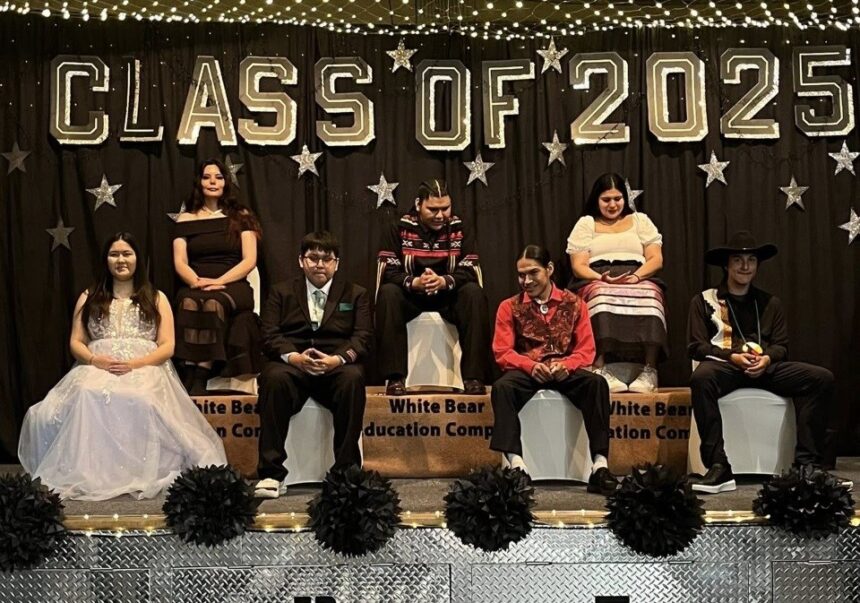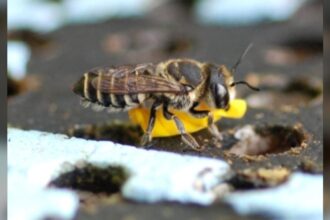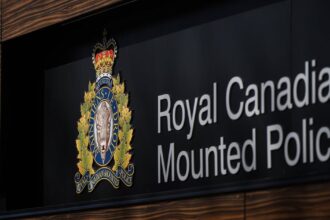In a stirring display of community pride and cultural heritage, the White Bear Education Complex recently celebrated its 2024 graduating class with an emotional ceremony that highlighted both academic achievement and Indigenous traditions. The event, held on the White Bear First Nations reserve, brought together families, educators, and community leaders to honor the accomplishments of these young scholars as they prepare to embark on their next journey.
The graduation ceremony commenced with a grand entry led by Indigenous drummers, whose powerful rhythms reverberated throughout the venue. Graduates, adorned in traditional regalia alongside their formal graduation attire, processed into the ceremony space while proud family members looked on, many visibly moved by the significance of the moment.
“What we witness today is not just the culmination of academic effort, but the continuation of a sacred journey,” said Principal Robert Standingwater in his opening address. “These students carry with them not only their diplomas but the wisdom of their ancestors and the responsibility to their community.”
The White Bear Education Complex, which serves students from the four bands that comprise the White Bear First Nations—Pheasant Rump Nakota, Ocean Man, White Bear, and Stick People—has become known for its innovative approach to education that blends provincial curriculum requirements with Indigenous knowledge systems and cultural teachings.
This year’s valedictorian, Melissa Strongeagle, delivered a powerful address that referenced both her educational journey and her cultural identity. “The lessons we’ve learned extend far beyond textbooks,” she told her fellow graduates. “We’ve been taught to walk in two worlds with strength and purpose, honoring our traditions while embracing new opportunities.”
Community elder Joseph Running Bird conducted a traditional blessing ceremony for the graduates, using sacred medicines and offering words of guidance in both English and Nakota. The ceremony included the presentation of eagle feathers to each graduate, symbolizing wisdom, courage, and the high expectations the community holds for its young people.
“The eagle feather carries tremendous responsibility,” explained Running Bird. “It represents our highest honors and reminds these young people that they now soar as representatives of their families and nations.”
Education achievements were particularly noteworthy this year, with 85 percent of the graduating class securing post-secondary opportunities through scholarships, apprenticeships, or direct employment pathways. Several graduates have been accepted to programs at the University of Saskatchewan, Saskatchewan Polytechnic, and First Nations University.
White Bear Chief Nathan Pasqua emphasized the importance of this educational milestone for the community’s future. “Each graduate represents our continued resistance and resilience,” Pasqua noted. “Their success strengthens our sovereignty and demonstrates our capacity to thrive while maintaining our cultural identity.”
The celebration concluded with a community feast featuring traditional foods prepared by community members, followed by an honor dance where graduates were joined by family members in a moving display of intergenerational connection and pride.
For White Bear First Nations, these graduation ceremonies represent more than academic achievement—they symbolize cultural continuity and community strength in the face of historical challenges. As these graduates move forward into diverse pathways including post-secondary education, employment, and community leadership roles, they carry with them not only their diplomas but also the cultural knowledge and community support that has sustained their nations for generations.
As we witness these young people crossing the threshold into adulthood, one cannot help but wonder: How might their unique educational experience, blending Western academics with Indigenous knowledge, prepare them to become the innovative leaders our complex world so desperately needs?


















